The latest supernova: Supernova 2005cs in M51 (see center of right image). Blue supergiant, type II.
Discovered by Wolfgang Kloehr, June 28, 2005 Supernova 2005cs in M51 (see center of right image). Blue supergiant, type II.
Discovered by Wolfgang Kloehr, June 28, 2005
Neutron stars accidentally observed (1968) as pulsars (Jocelyn Bell etc)
Very regular radio pulses,
period of 4 s ⇒ 2 ms
Note that height of pulse is very irregular |
 |
| All lie close to Milky Way (i.e. in plane of galaxy).
Therefore must be related to stars |
 |
|
Best known is Crab. Known to be remnant from supernova in 1054 (seen by Chinese) Pulsar at centre has period of ∼ .03 s |
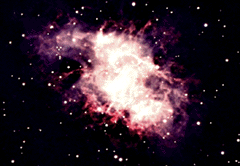 |
| Optical pulsing observed by TV or strobe |
 |
| Pulses at all wavelengths, in synch. |
 |
What pulses?
Now known to be neutron star: predicted by Oppenheimer (yes, that one) in 1935. Density
ρ ∼ 1015:
i.e. 1000000000000000 times as much as water!
Magnetic field is very strong: ~ 1 trillion times stronger than earth
|
|
| Charged particles travel along lines of force, hence can only escape from poles of neutron star. Hence "lighthouse"mechanism: we only see pulsar when mag. pole points towards us |
|
Do we see all the pulsars?
No, because they would have to be oriented so that they point towards us. rotation period will slow down...
- Neutron Star forms from supernova, P ∼ 1 ms
- P ∼ 30 ms after 1000 years
- P ∼ 5 s over 105 years, also magnetic field may weaken, at which stage radio signal is too weak to be seen
Hence probably large number of radio-quiet neutron stars: essentially impossible to see.
| Since neutron stars are so hot we see them in X-rays and γ-rays. This shows how a new satellite (GLAST) will see the sky: the brightest object is he Crab and the second brightest....... Geminga: a pulsar that had only been seen in γ-rays until it was identified as a very faint star |
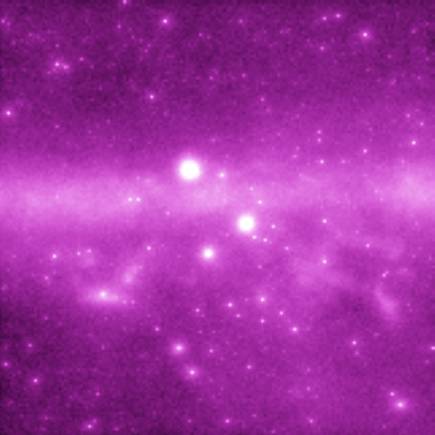 GLAST Gamma Ray Sky Simulation
Credit: S. Digel (USRA/ LHEA/ GSFC), NASA
|
Black Holes
Invented by .....?
Well, actually John Michell rector of Thornhill Church in Yorkshire and
- geologist?
- philosopher?
- astronomer?
- Seismologist?
- Polymath?
presented his ideas to the Royal Society in London in 1783.
and astronomer Pierre Laplace, in 1795.
Escape Velocity How hard would you need to throw something so that it never came back? energy is conserved: ,the gravitational potential energy of any object at a distance r is
P.E. = -GMm
r
G = 6.67x10-11 is Newton's constant, M is the mass of the object from which you are launching, so for the earth is 6x1024 kg and m is the mass of the object. Note P. E. = 0 at r=∞ . The kinetic energy is
K.E. = ½mv²
Total energy is conserved, so at Earth's surface
T.E. = P.E. + K.E. or
E = ½mv² - GMm
r
and at r= ∞, P.E. = 0, so want K.E. = 0 as well and
Remember T.E. = P.E. + K.E. = 0
so for the earth:
- R = 6500 km ,
- M = 6x1024
- so v = (2GM/R)½ = 110000 m/s = 11 km/s
| However we can interpret this differently: what radius would the earth have for a given escape velocity? |
R = 2GM
v²
|
| In particular, if the escape velocity is the speed of light c, nothing can escape |
R = 2GM
c²
|
This is the Schwarzchild radius ( black-hole radius) for any mass. For the earth it is ∼ 3mm
Statutory Warning:This is a fudge: you cannot treat light as a massive particle, nor can you handle a very strong gravitational field as if it were a weak one...... (there are actually two factors of 2 error which cancel out.....weren't we lucky!)
A black hole is the end product of star with > 10 M₀
But black holes are black: 
as the bumper sticker says. So how do we see them?
| If we are really lucky....(or unlucky) as a gap in the sky |
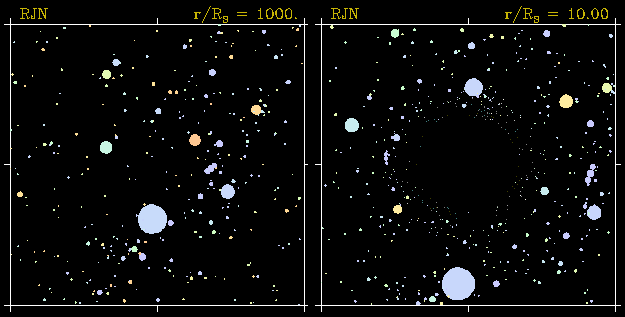
Too Close to a Black Hole
Credit & Copyright: Robert Nemiroff (MTU) |
| But more likely via the "accretion disk"
which will have velocity ∼ c at inner edge, so temp well into X-rays |
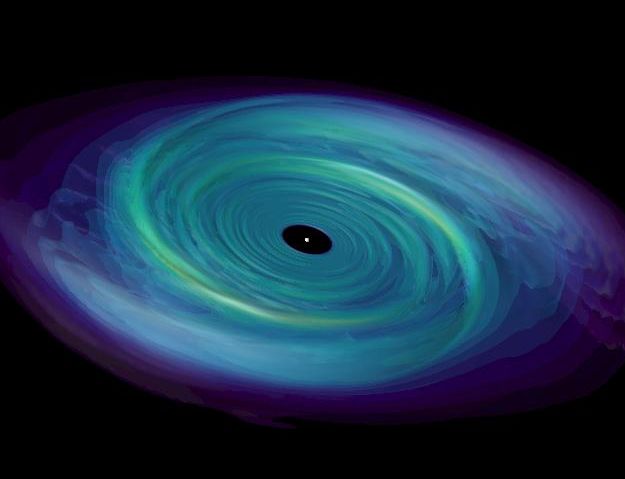 |
So want binary, with invisible heavy companion with M > 3M₀, emitting X-rays
Prime candidate is Cygnus X-1, which agrees with position of a massive blue star HD 226868
- Mass of primary star ∼ 20M₀
- Mass of invisible object M∼ 9M₀
- puts out 4x1030 W in X-rays (i.e. 10⁴ L₀!!)
Other weird objects include Cyg X-3, Herc X-1 and SS-433
SS-433 found as star with very unusual spectrum
X-ray source discovered at same position Spectrum changes with 164 day cycle, corresponding to v ∼ 50000 km/s |

|
| This is something new! Narrow jets travelling at 1/5 speed of light are shot out of poles, probably formed by thick accretion disk around neutron star or black hole: "cosmic lawn sprinkler" |
 |
Chemical Anomalies:
We have assumed that all stars have the same chemical composition
90% H, 9% He, 1% metals by number
74% H, 24% He, 2% metals by weight
However some stars do not follow this pattern: in particular all globular cluster stars and many Milky Way stars are metal-poor (≈.1%)
Regular stars are Population I
Metal poor stars are known as Population II.

They lie below the main sequence, since the lack of metals makes the star appear bluer (fewer absorption lines in UV).
Hence we could really think of them as MS stars shifted a bit to the left)
These are very old stars: formed before there was much metal created by supernovae
Some stars have a lot of unexpected heavy elements: e.g. Peculiar A have too much Si, Cr, Eu, Sr
Carbon stars have large amounts of C in their atmospheres, even showing C2 and CN bands
Heavy metal-oxide stars: ZrO, LaO, YO
All of these are very rare and not understood
Magnetic variables:
Very large magnetic fields
Average B ≈ .1-5 T
(B for sun ≈ .01T ≈ 100 Gauss, inside sunspots ≈ .4T)
Fields very variable, spectrum of stars changes with fields
Where variables fit into the scheme of things...
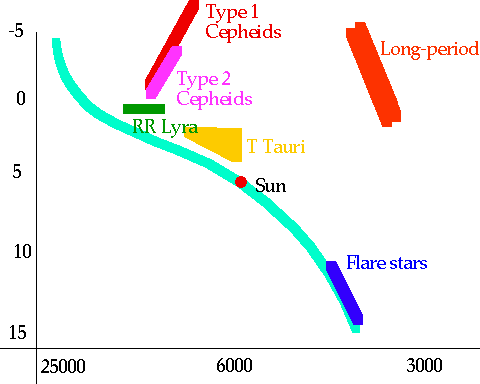
Stellar evolution once over lightly:
We have now seen all the stages in the stellar evolution of both small and larger stars: they can now be fit into a life-cycle:
(note in passing: we talk about stellar evolution, which is stupid, since we don't talk about the evolution of a baby into an adult.)
Also note: ALL stars go through ALL the stages: the reason why we only see (e.g.) 100 or so planetary nebulae vs 108 normal stars is that the lifetime of a planetary nebula is only ≈ 50000 yrs, vs 1010 yrs for a main sequence star
Solar mass stars:
Times are approximate in years.

Large Mass stars
Endpoint depends on mass of star:
5M₀ ⇒ neutron star
20 M₀ ⇒ black hole

Note lifetimes are much shorter.
Now we want to look at how stars work
| 

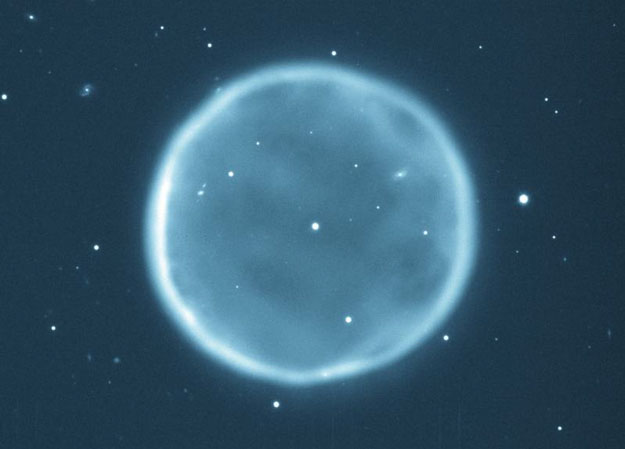

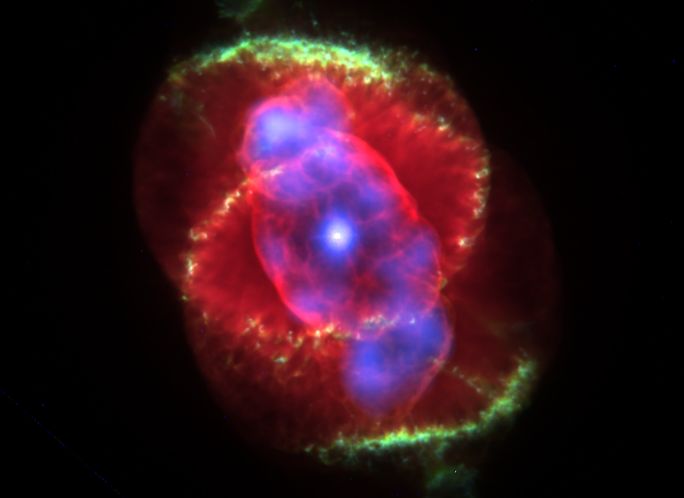
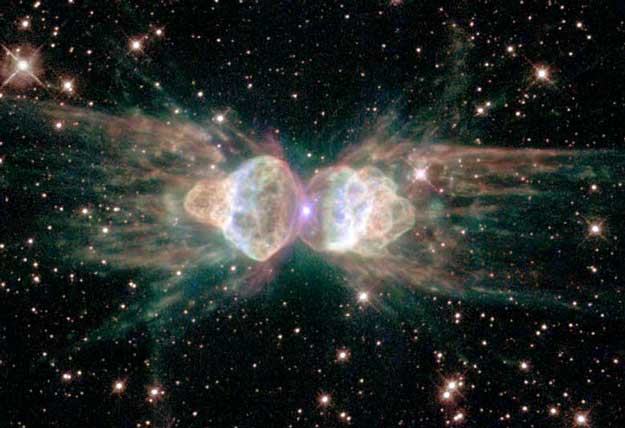
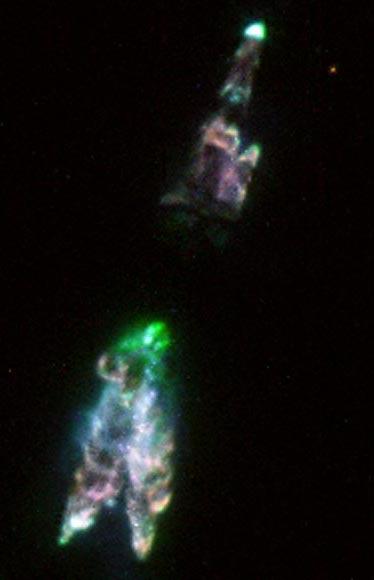


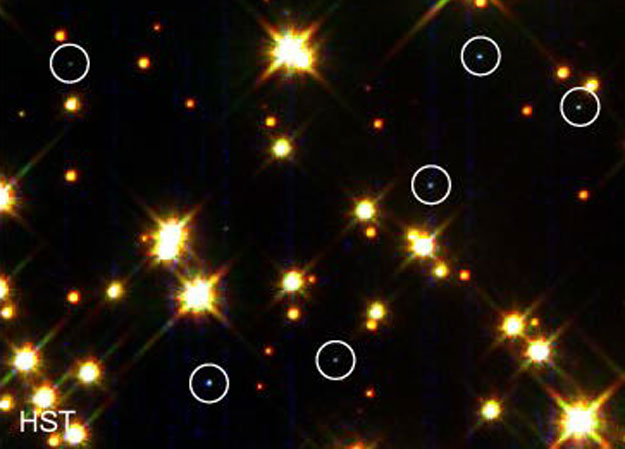
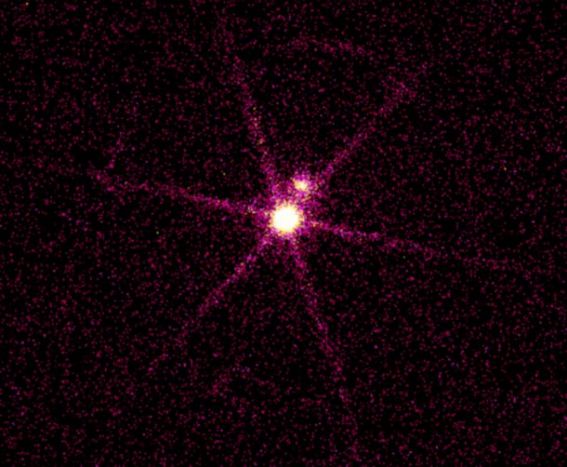
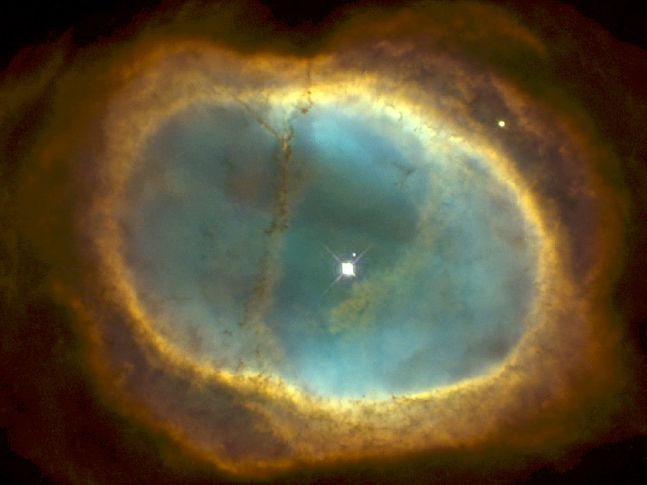


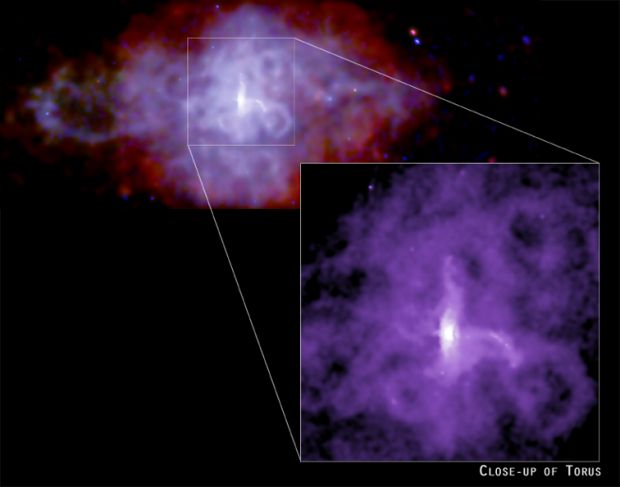
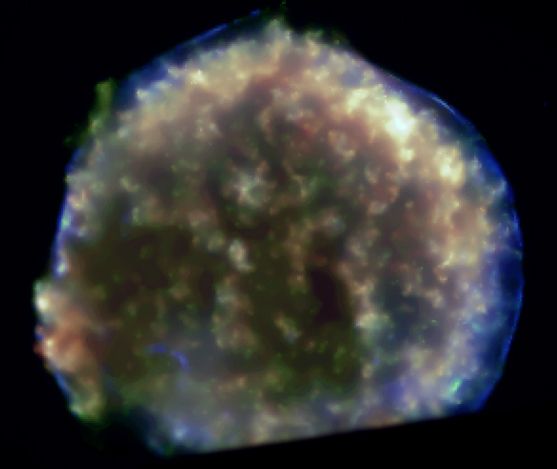 Credit: SAO, CXC, NASA
Credit: SAO, CXC, NASA
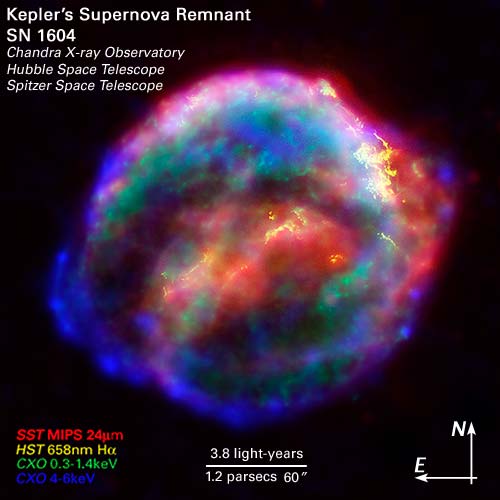
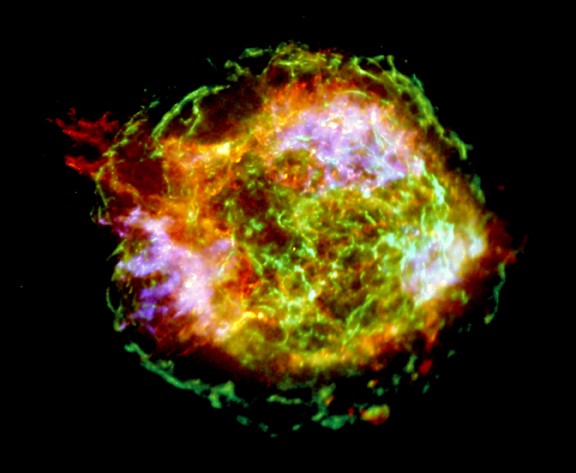
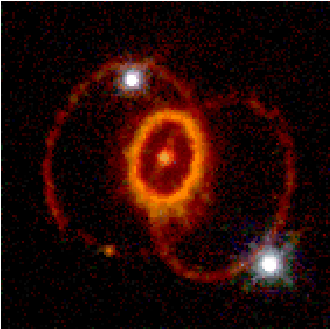
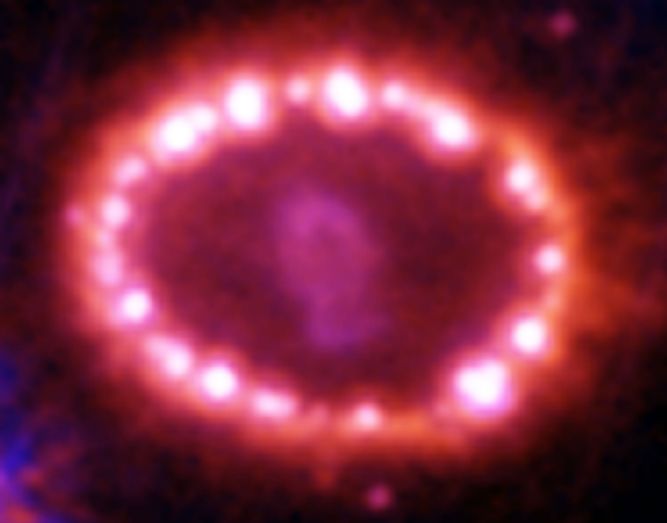
 Supernova 2005cs in M51 (see center of right image). Blue supergiant, type II.
Discovered by Wolfgang Kloehr, June 28, 2005
Supernova 2005cs in M51 (see center of right image). Blue supergiant, type II.
Discovered by Wolfgang Kloehr, June 28, 2005









